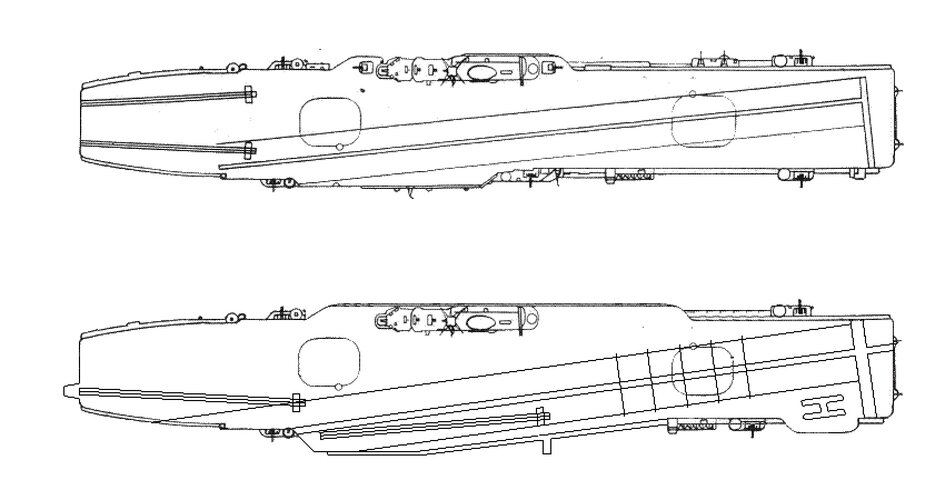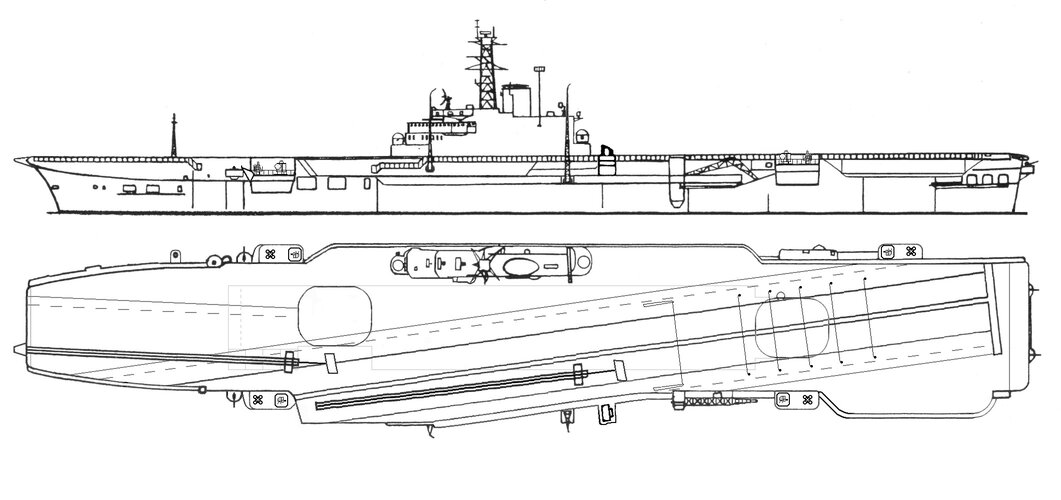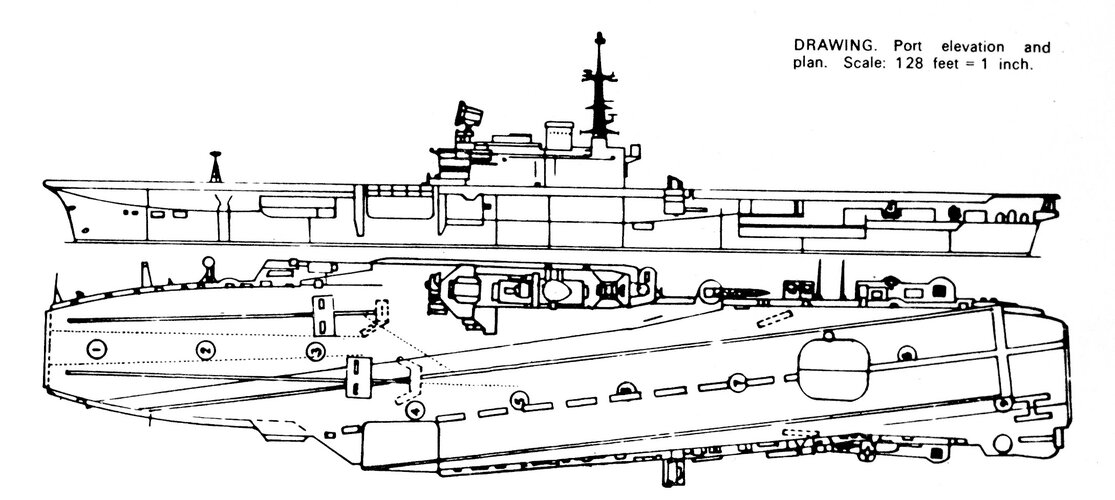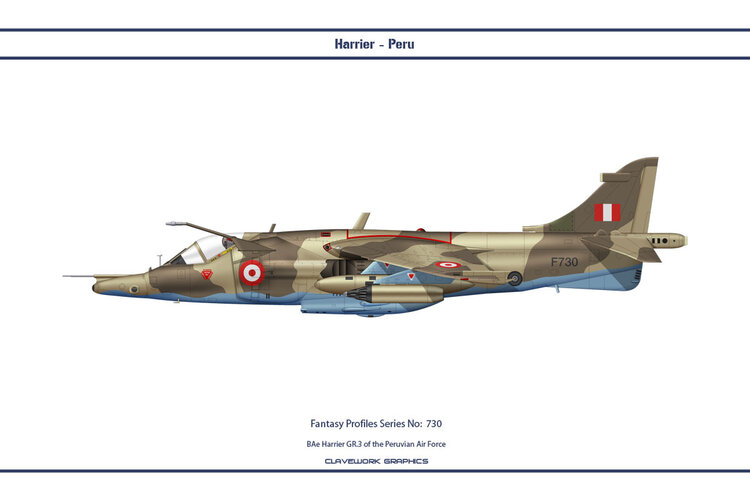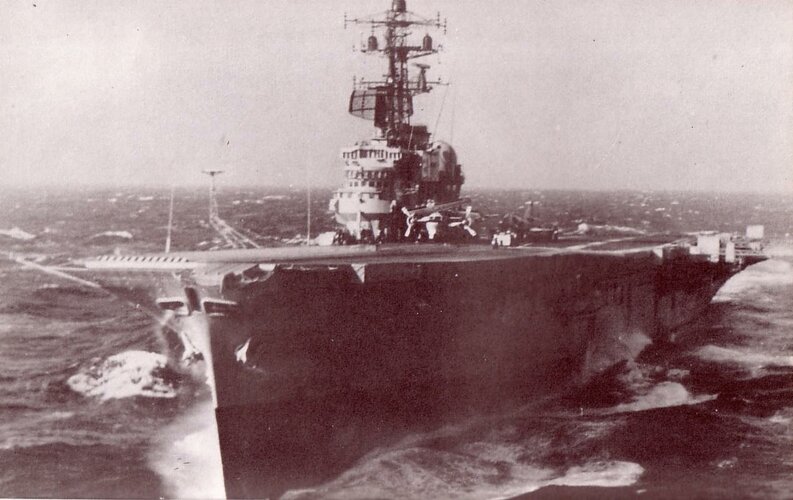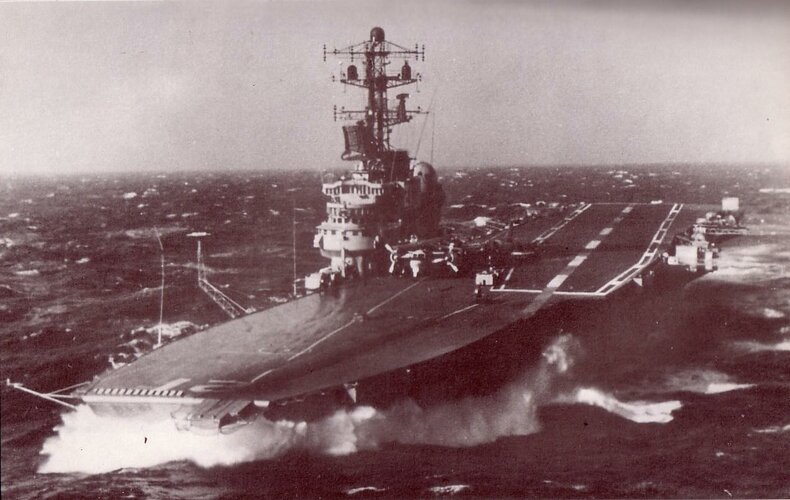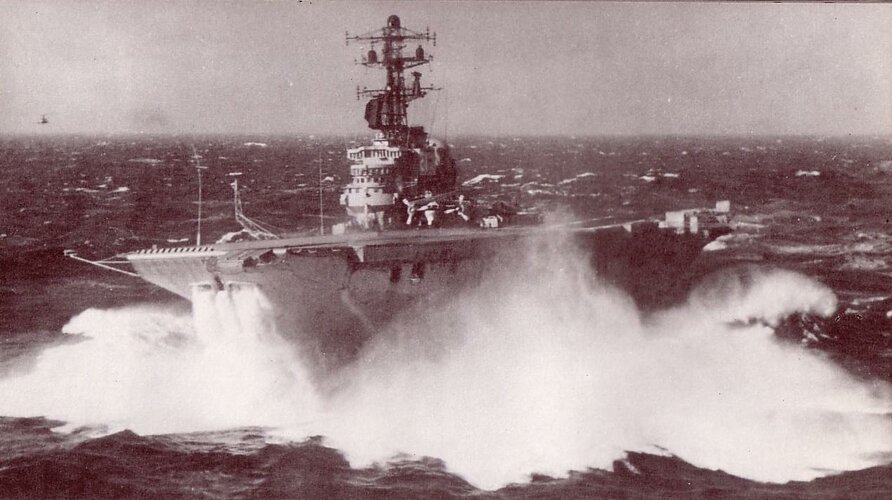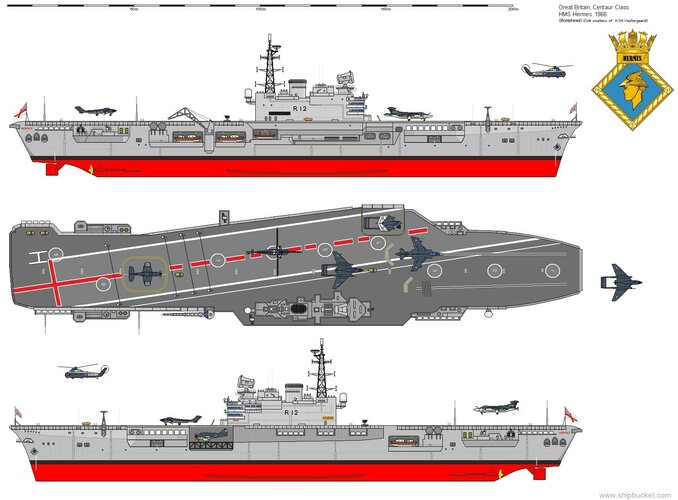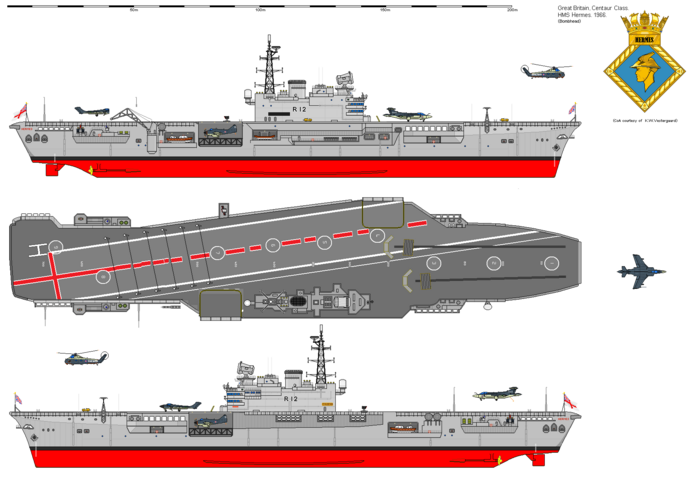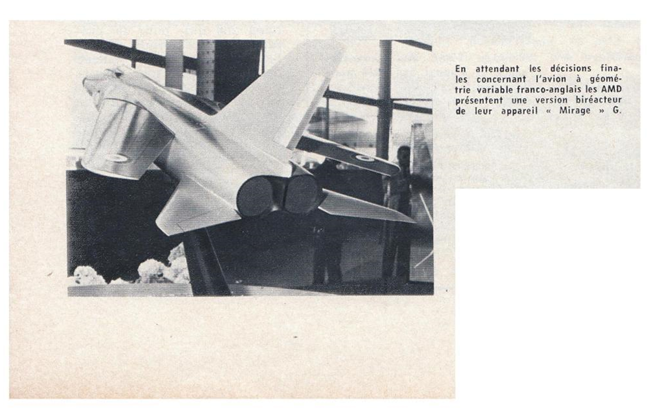RAN Centaur class Modernization
Purchase CVL Bulwark from the UK (1958), and modernize (1959-62), recommissioning as HMAS
Canberra.
1. flight deck enlarged 15’ to port (angle changed from 5.5° to 7.5°) & 10’ to starboard
2. fwd elevator moved 9’ starboard, and replaced with new elevator & machinery (54ft x 44ft & 37,000lb capacity)
3. aft elevator replaced with new aft elevator & machinery (54ft x 44ft & 40,000lb capacity)
4. starboard bow cat removed and 145’ stroke BS4A catapult installed on angle deck
5. new 145’ stroke BS4A catapult installed replacing port bow BH-5 Hydraulic catapult
6. arresting gear replaced & relocated 3’-5’ to port (8-wire 30,000lb replaced by 5-wire 35,000lb)
7. port 15’ of hangar extension refitted into repair shops, arranged as four 13.5' (f-a) x 15' (p-s) x 12’ height shops
8. Hangar 274ft x 62ft x 17.5ft with a 55ft x 47ft x 17.5ft extension forward of the fwd lift
9. boilers & turbines rebuilt, steam electrical generators replaced with diesel and gas turbine generators
10. 220-volt D.C. two wire electrical system replaced with 3-phase three-wire A.C. system operating at 440 volts 60 cycles/second, all lead-sheathed cabling replaced with rubber-insulated neoprene-sheathed cabling
11. new radar & radios
Purchase CVL
Albion from UK (1962), and modernize (‘63-‘65) as
Bulwark (except 4 Seacat SAM launchers (replacing twin 40mm mounts) {also fitted to
Canberra 1966}, recommissioning as HMAS
Australia.
HMS Centaur, Albion, & Bulwark as built:
Hangar = 274 x 62 x 17.5ft with a 55ft extension forward of the fwd lift
Lifts = 54ft long x 44ft wide (fwd & aft lift) with a 35,000lb capacity
HMS Centaur 1958 refit:
Lifts = 54ft long x 44ft wide (fwd lift) [37,000lb capacity] & 54ft long x 44ft wide (aft lift) [40,000lb capacity]
Hydraulic catapults
(BH=Mitchell-Brown)
Type Run Length Capacity Classes
BH-5I N/A 151ft 18,500lbs @ 95kts; 30,000lbs @ 82.5kts Albion, Bulwark, Centaur
Steam Catapults
(BS=Mitchell-Brown)
Type Run Length Capacity Classes
BS4 104ft 151ft 40,000lb@78kt, 30,000lb@101kt Hermes 1959
BS4C 130ft 165ft 35,000lb@99kt, 30,000lb@110kt Centaur 1958
BS4A 145ft 175ft 50,000lb@87kt, 30,000lb@120kt Hermes (port 1966)
1953 Design
Displacement: 21,100 tons std; 27,000 tons full load
Dimensions: 650 x 90 x 24 feet / 198 x 27.4 x 7.3 meters
Extreme Dimensions: 737 x 116 x 27 feet / 224.5 x 37.4 x 8.2 meters
Propulsion: Steam turbines, 4 boilers, 2 shafts, 76,000 shp, 28 knots
Crew: about 1100 + 300 air group
Armor: 1-2 inch decks
Armament: 2 6-barrel, 8 dual, 4 single 40 mm AA
Aircraft: 26
Modernized Design
Displacement: 22,300 tons std, 28,200 tons full load
Dimensions: 650 x 90 x 25 feet / 198 x 27.4 x 7.6 meters
Flight Deck Dimensions: 733 x 128 feet / 223.3 x 39 meters (93 feet/28.3m axial width)
Extreme Dimensions: 745.5 x 140 x 28 feet / 227.1 x 42.6 x 8.5 meters
Propulsion: Steam turbines, 4 boilers, 2 shafts, 76,000 shp, 28 knots
Crew: about 1100 + 300 air group
Armor: 1-2 inch decks
Armament: 4 SeaCat SAM launchers, 4 single 40 mm AA
Aircraft: 26
Angle-deck total length 536’ @ 7.5°
Angle-deck end to wire #1 - 117’, top of round-down to wire #1 - 102’; wire #1-#5 - 96’; wire #5-angle deck end 323’
[wire #1-#2 - 25.5’, wire #2-#3 - 23.5’, wire #3-#4 - 23.5’, wire #4-#5 - 23.5’, wire #5-barrier - 69.5’]
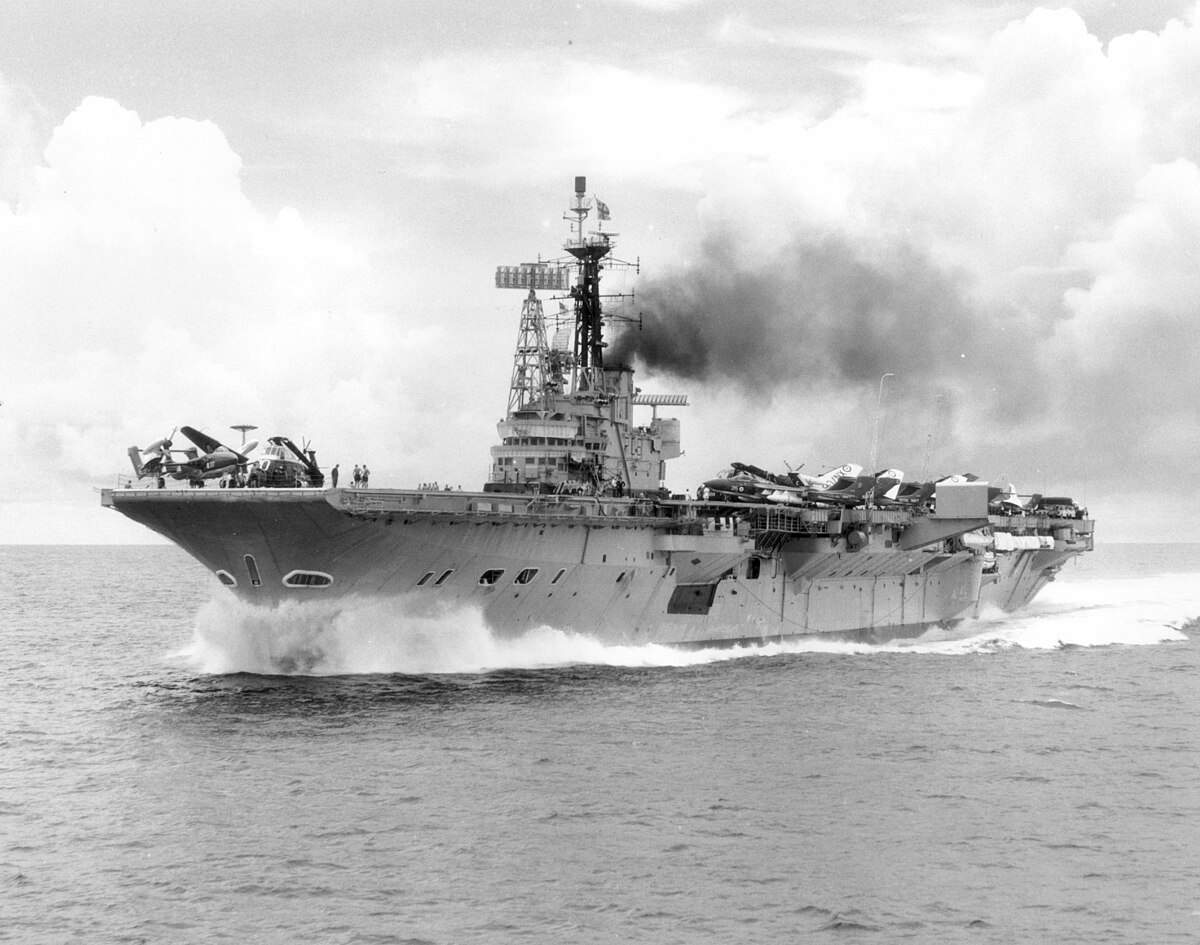
en.wikipedia.org

